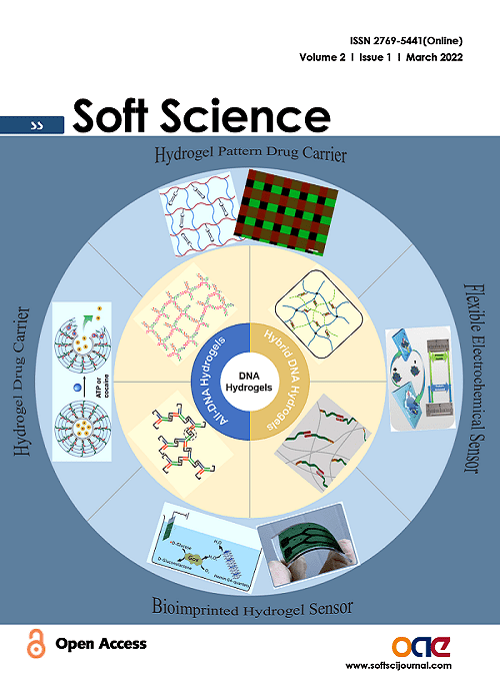Volume 2, Issue 1 (March, 2022) – 3 articles
Cover Picture: Due to considerable progress in DNA nanotechnology, DNA is gaining significant attention as a programmable building block for the next generation of soft biomaterials. DNA has been used as either a single component to form all-DNA hydrogels or a crosslinker or functional entity to form hybrid DNA hydrogels through physical interactions or chemical reactions. The formed hydrogels exhibit adequate biocompatibility, convenient programmability, tunable multifunctionality and the capability of precise molecular recognition, making them an irreplaceable polymeric platform for interfacing with biology. Responsive DNA hydrogels that are prepared through the hybridization of DNA sticky ends, the formation of i-motifs, enzymatic ligation and enzymatic polymerization are commonly reported nowadays and can undergo disassembly induced by various triggers, including alterations in ionic strength, pH, temperature and biomolecules. These hydrogels are envisioned for applications in drug delivery and biosensing. This perspective assesses the most recent and important developments in this emerging class of biomedically useful DNA hydrogels.
view this paper 










